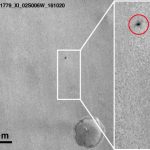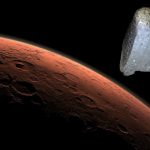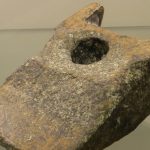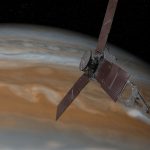Schiaparelli: Mars probe ‘crash site identified’0
- From Around the Web, Space
- October 25, 2016
The gouge in the ground probably made by Europe’s Schiaparelli probe as it hit the surface of Mars on Wednesday has been imaged by a US satellite.

The gouge in the ground probably made by Europe’s Schiaparelli probe as it hit the surface of Mars on Wednesday has been imaged by a US satellite.

New analysis of the most famous Martian meteorite ever recovered has changed our understanding of the early volcanic history and evolution of the Red Planet. The findings continue an ongoing debate as to whether insights into the planet’s ancient volcanism can be used to make the case for a habitable, oxygen-rich ancient Martian atmosphere.

Planet Nine’s days of lurking unseen in the dark depths of the outer solar system may be numbered.

In 1976, two Viking landers became the first US spacecraft from Earth to touch down on Mars. They took the first high-resolution images of the planet, surveyed the planet’s geographical features, and analyzed the geological composition of the atmosphere and surface. Perhaps most intriguingly, they also performed experiments that searched for signs of microbial life in Martian soil.

A piece of aluminum found in Romania that looks like a purpose built component has reportedly been dated as 250,000 years old. Speculation is that it belongs to aliens, as aluminum wasn’t produced by mankind until 200 years ago. Others disagree, however.

…Clinton’s Presidential campaign may ultimately rely on a false flag extraterrestrial invasion, which might be a factor in why she and her campaign chair, John Podesta, have repeatedly raised the UFO issue during the election campaign.

“It was definitely awesome and a little freaky at the same time,”

“So Planet Nine has tilted the entire disk of the solar system by 6 degrees and because we live on that disk…to us it looks like the sun is tilted, but it’s actually the other way around.”

And do I want one? (Yes, duh)

NASA’s Juno spacecraft entered safe mode Tuesday, Oct. 18 at about 10:47 p.m. PDT (Oct. 19 at 1:47 a.m. EDT). Early indications are a software performance monitor induced a reboot of the spacecraft’s onboard computer.